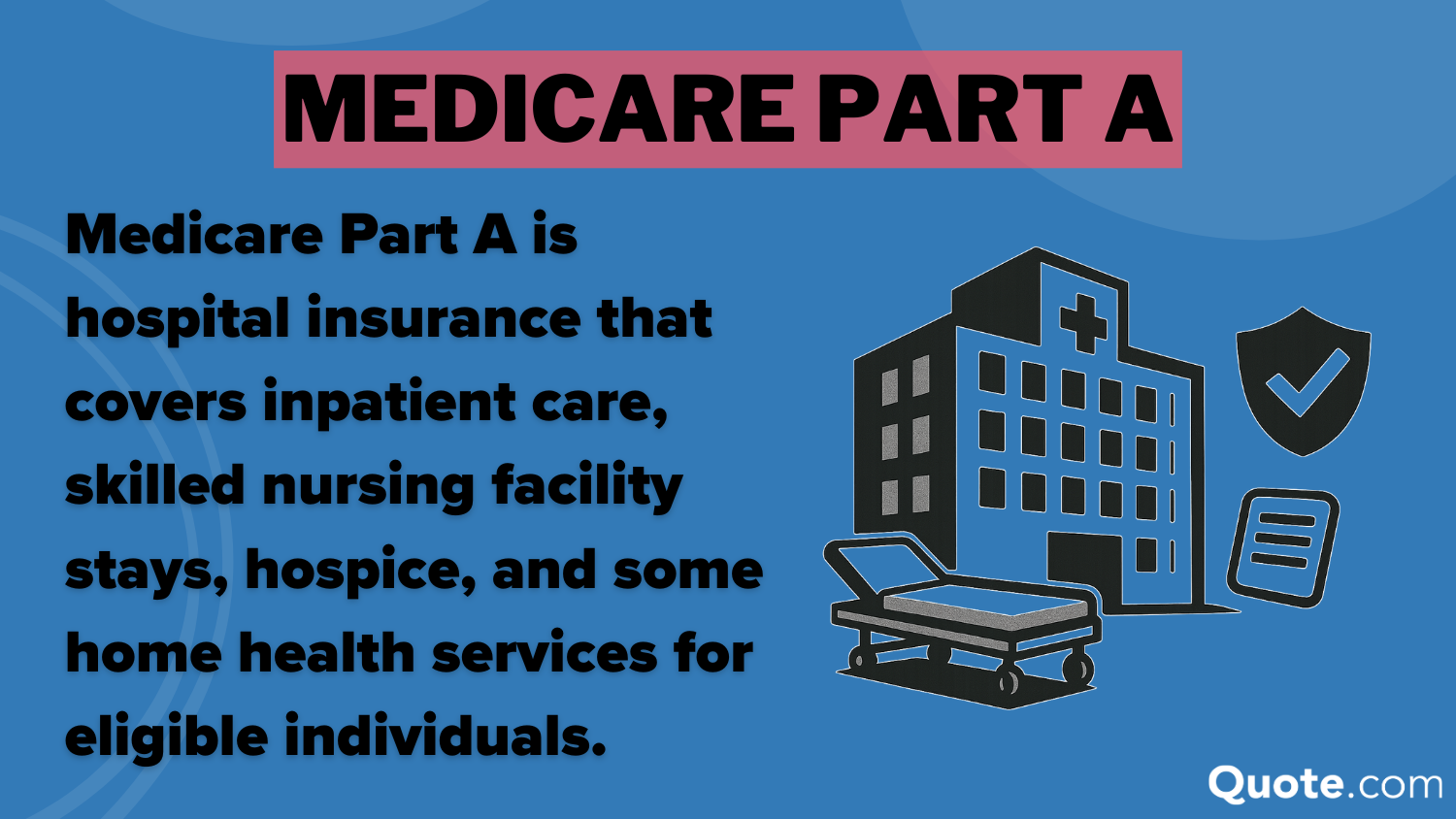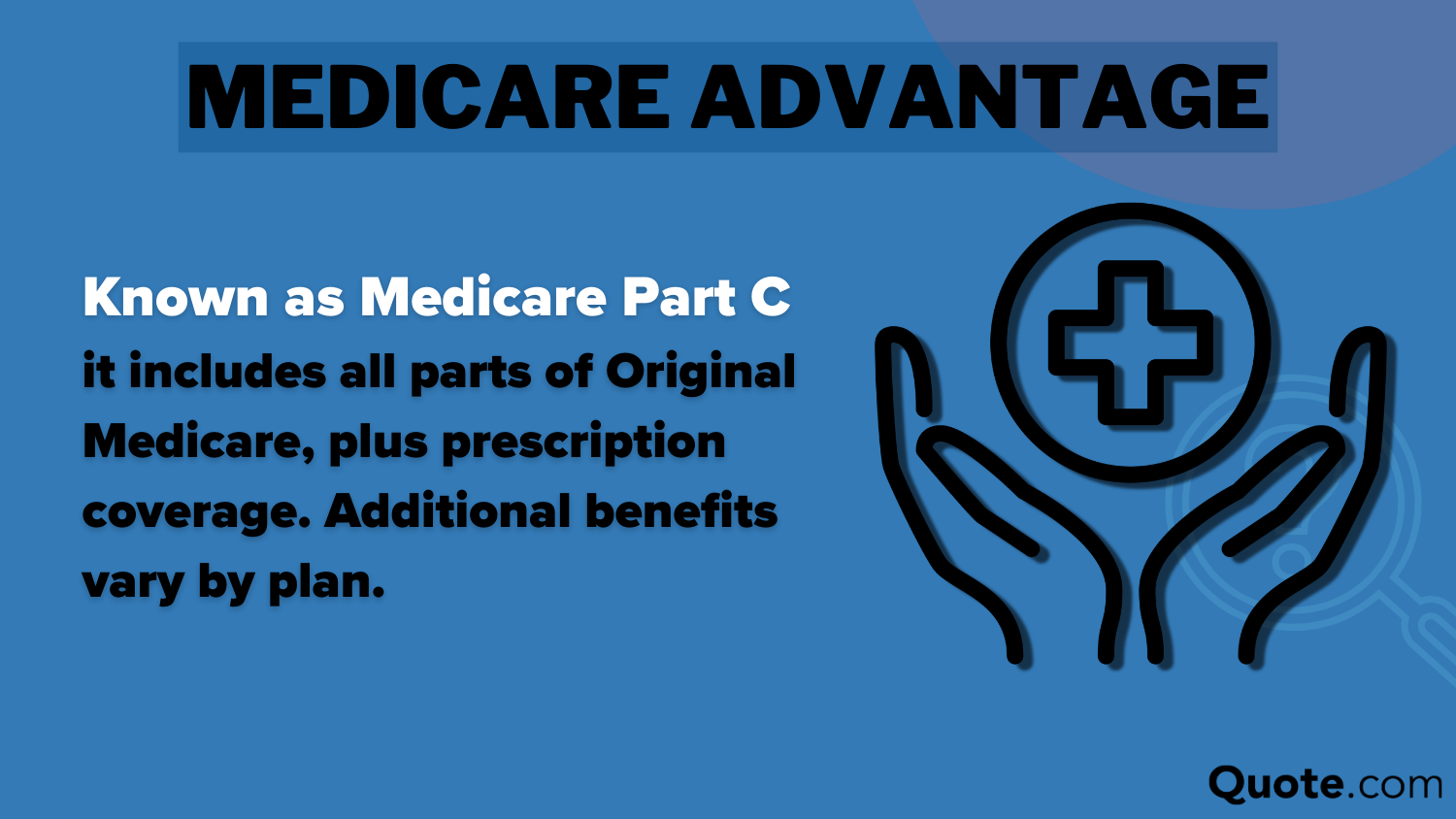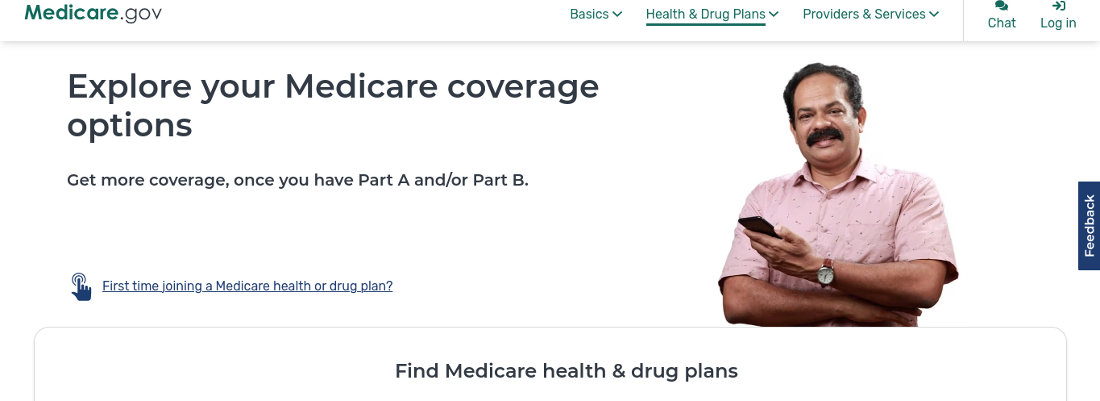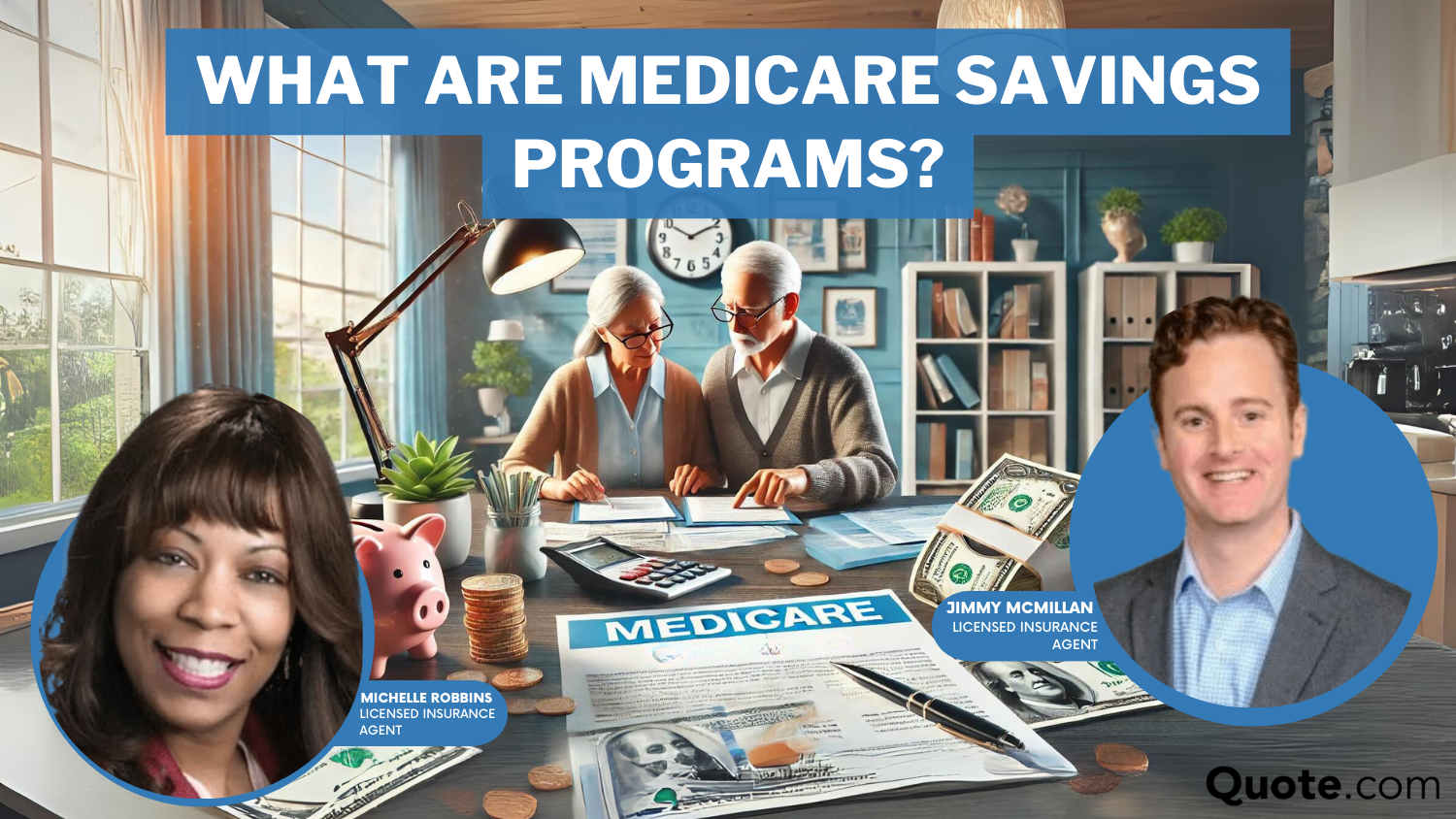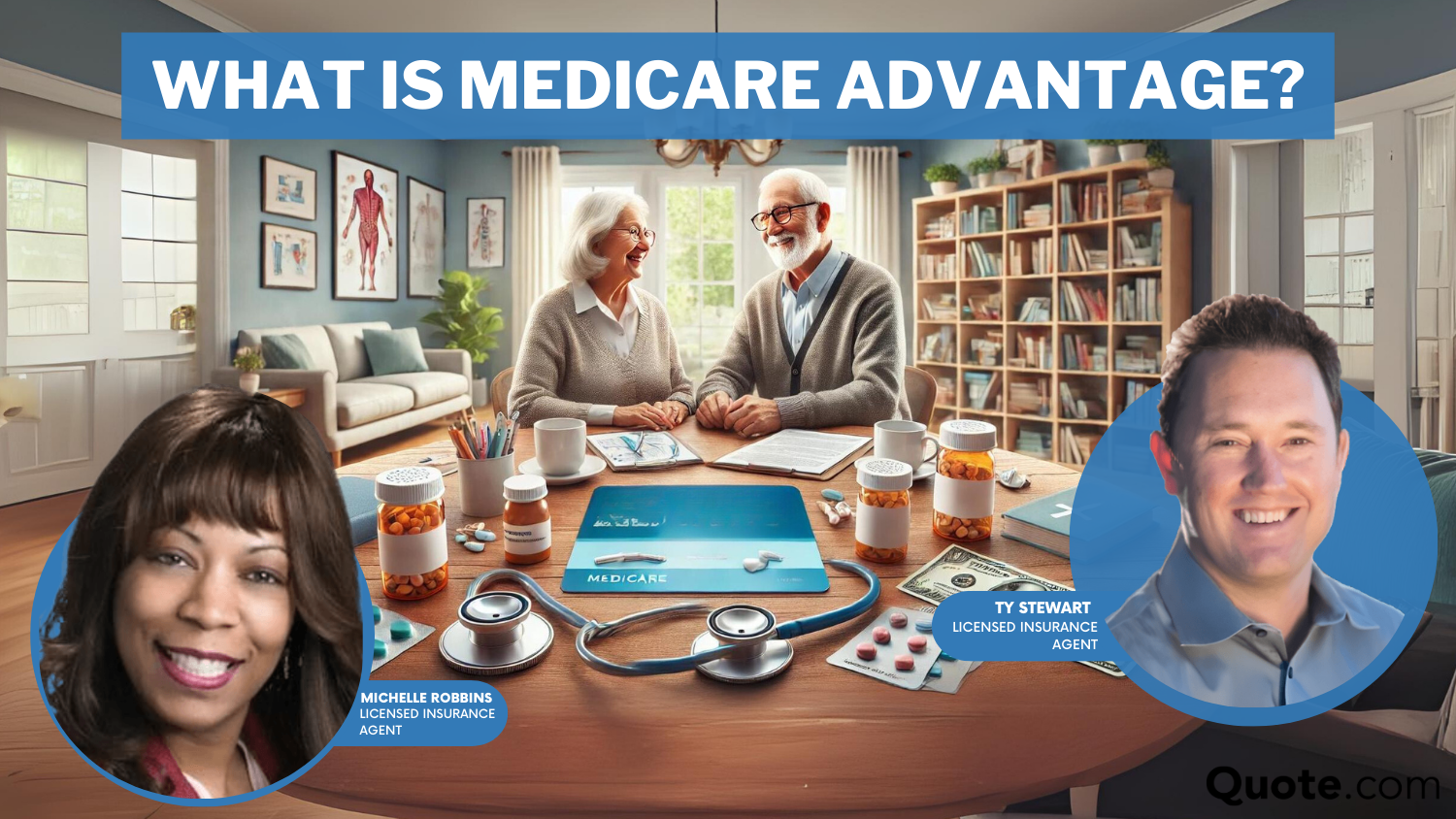What is Medicare Part D? (Comprehensive Explanation of 2026 Coverage)
Medicare Part D covers prescription drug costs. Original Medicare won't cover your medications, so enroll in Medicare Part D when you sign up for coverage. Plans cost $34/month, and every Medicare Part D plan is required to cover a wide range of prescriptions, including cancer treatments.
Read more Secured with SHA-256 Encryption



Table of Contents
Table of Contents


Licensed Insurance Agent
Ty Stewart is the founder and CEO of SimpleLifeInsure.com. He started researching and studying about life insurance when he got his first policy for his own family. He has been featured as a life insurance expert speaker at agent conventions and in top publications. As an independent licensed life insurance agent, he has helped clients nationwide to secure affordable coverage while making the...
Ty Stewart


Insurance Content Managing Editor
Daniel S. Young began his professional career as chief editor of The Chanticleer, a Jacksonville State University newspaper. He also contributed to The Anniston Star, a local newspaper in Alabama. Daniel holds a BA in Communication and is pursuing an MA in Journalism & Media Studies at the University of Alabama. With a strong desire to help others protect their investments, Daniel has writt...
Daniel S. Young


Licensed Insurance Agent
Heidi works with top-rated life insurance carriers to bring her clients the highest quality protection at the most competitive prices. She founded NoPhysicalTermLife.com, specializing in life insurance that doesn’t require a medical exam. Heidi is a regular contributor to several insurance websites, including FinanceBuzz.com, Insurist.com, and Forbes. As a parent herself, she understands the...
Heidi Mertlich
Updated September 2025
What is Medicare Part D? When you sign up for Medicare, you have the option to add a Part D plan for your medications.
Original Medicare does not cover prescription drugs. Enrolling in Medicare prescription drug coverage ensures you don’t lose affordable access to necessary medications. Part D isn’t required, but skipping it can be costly — there is a 1% penalty for every month you go without it.
Scroll through this guide to learn how Medicare Part D works and discover how you can maximize your Medicare benefits. Then enter your ZIP code to compare plans from local Medicare Part D companies.
- Medicare Part D covers prescription costs for seniors
- Part D premiums are $34/month
- You pay a 1% penalty per month if you aren’t enrolled in Medicare Part D
Medicare Part D Explained
Medicare Part D plans were created in 2006 to help seniors pay for expensive prescriptions. Prescription drugs are tiered based on class, with higher and specialty tiers having higher copayments.
Original Medicare (Parts A and B) does not provide prescription drug coverage. It only covers medical costs and hospital stays.
What is Medicare Part A? Part A is hospital insurance that pays for hospital stays and nursing home or hospice care. What is Medicare Part B? This part if your policy covers routine medical services and equipment.
Original Medicare is only designed for hospital and medical care and doesn’t cover prescriptions. Every Medicare Part D plan is required to cover a wide range of prescriptions, including cancer and HIV/AIDS treatments.
Read More: Millennial’s Guide to Health Insurance
Get a Free Medicare Plan Review
Speak With a Licensed Insurance Agent Today
Secured with SHA-256 Encryption
What Medicare Part D Covers
What drugs are covered by Medicare Part D? Most providers update the formulary every year or whenever the FDA announces a recall. Prescriptions are tiered based on class, so copayments will vary based on which class of drug you need:
- Tier 1: Mostly generic prescriptions with the cheapest copayments.
- Tier 2: More preferred or brand-name drugs than Tier 1, so copayments are slightly higher.
- Tier 3: Mostly non-preferred, brand-name prescriptions with the highest copayments.
A specialty tier also exists for very expensive prescriptions or exemptions. If you can’t afford a certain prescription or want to find a better price, talk to your doctor about comparable drugs in lower tiers.
The government requires Medicare to offer at least two prescriptions in each class. However, there are over 700 different Part D plans, and each has a different formulary listing the covered prescriptions. Insurance companies can also change their formulary list at any time.
Shop around and compare the list of covered prescriptions to ensure that yours is still on it before you renew coverage.
Medicare Savings Programs (MSPs) can help reduce all prescription costs to $11. You have to meet the MSP income requirements to qualify. If you don’t, Medicare Supplemental Insurance, also known as Medigap, can cover some costs for an additional monthly premium and deductible.
If you can’t find your specific prescription on any plan’s formulary, you can ask for an exception. Your doctor or prescribing physician must write a supporting statement explaining why this specific medication is necessary.
Comparing Medicare Part D Costs
Medicare Part D costs $34/mo for everyone, but the private insurance companies selling plans set their own deductibles.
Medicare Costs by Plan Type| Medicare Plan | Monthly Premium | Annual Deductible | Out-of-Pocket Max |
|---|---|---|---|
| Part A | $0-$505 | $1,632 | N/A |
| Part B | $174 | $240 | N/A |
| Part C | $0-$200 | $0-$200 | $8,850 |
| Part D | $34 | $0-$545 | $2,000 |
| Medigap | $35-$488 | $0-$2,800 | $3,500-$7,500 |
Your monthly Part D premium does not include your prescription copayments. Out-of-pocket costs can vary based on where you live and the provider you choose.
Medicare Advantage vs. Medicare Part D Plan Comparison
What is Medicare Part C? Sometimes called Medicare Advantage Plans, Medicare Part C are stand-alone health policies that combine Original Medicare (Parts A and B) with Medicare Part D.
You pay one premium for all your coverage with Medicare Advantage, instead of separate monthly plans for each Part A, Part B, and Part D.
However, like Part D plans, Medicare Advantage plans have different formulary lists of brand-name and generic drugs. Compare multiple plans and companies online before you enroll.
Read More: What’s the difference between Medicare Advantage and Original Medicare?
How to Get Medicare Prescription Drug Coverage
There are two ways to get prescription drug coverage through Medicare: Medicare Part D or Medicare Advantage plans that include Part D. The good news is you enroll for either policy the same way on Medicare.gov.
Who is eligible for Medicare Part D? Part D is not available until you turn 65. There are specific enrollment periods around your 65th birthday when you can sign up for Medicare prescription drug coverage:
- Initial Enrollment Period (IEP): Starts three months before you turn 65 and ends three months after your birthday month
- Annual Enrollment Period (AEP): Between October 15 and December 7
- Open Enrollment Period (OEP): Between January 1 and March 31 for those who already have Medicare Advantage plans and need to change their coverage
- Special Enrollment Period (SEP): Must meet certain criteria to enroll, such as moving to another state or if your Medicare provider changes its coverage options.
Your IEP is the best time to sign up since you’ll have access to the lowest prices. Waiting to enroll can make it harder to get prescription coverage later. You’ll also pay a 1% penalty for every month you didn’t Part D.
If you’re still working or otherwise insured by an employer’s or spouse’s insurance policy, you won’t pay any penalties.
Get a Free Medicare Plan Review
Speak With a Licensed Insurance Agent Today
Secured with SHA-256 Encryption
Bottom Line on How Medicare Part D Works
What is Medicare Part D? Part D is an essential add-on to Original Medicare for covering prescription drugs, which is not included in Parts A and B. Medicare Advantage plans often bundle prescription coverage, offering a more streamlined and potentially cost-effective solution if you’re looking for ways to finance what your health insurance won’t cover.
Enrolling in Medicare Part D can be done during specific periods around your 65th birthday, with penalties for delayed enrollment unless covered by another insurance policy. Prescription costs are tiered, with higher tiers costing more.
Discuss alternative medications with your doctors or seek plans with better coverage for prescriptions if copayments are too expensive. Additionally, you can compare insurance companies online to find affordable Medicare Part D plans near you.
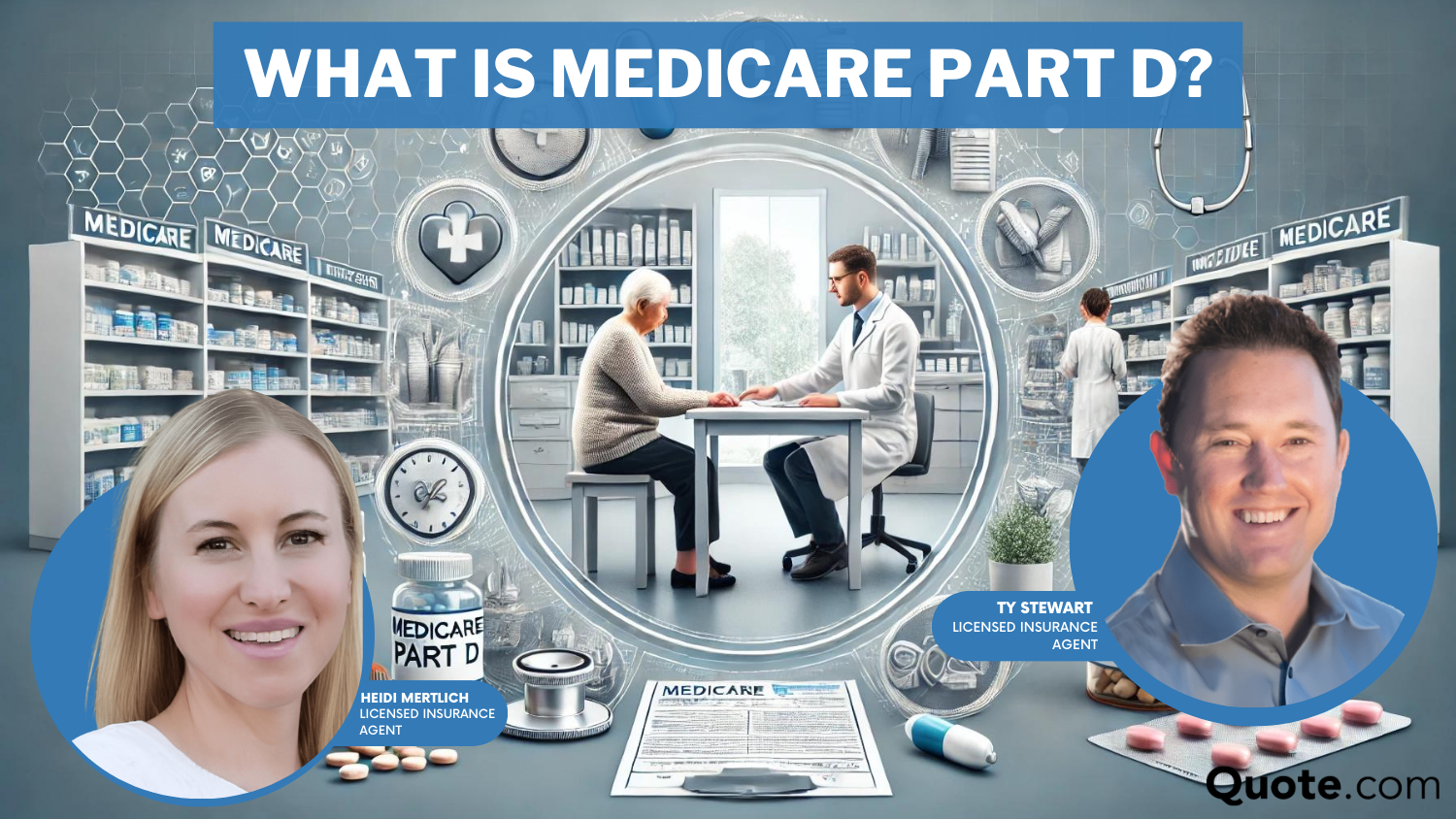
Frequently Asked Questions
What is Medicare Part D and how does it work?
Medicare Part D is an essential add-on to cover prescription drugs. Original Medicare doesn’t cover prescriptions, so you need to shop for Part D plans to help pay for your medication.
Does everyone pay for Medicare Part D?
Yes, everyone needs to enroll in Medicare Part D unless they have prescription coverage through another insurance plan. Enter your ZIP code to start comparing plans near you.
Can you add Medicare Part D at any time?
No, you can only sign up for Medicare during the Initial, Annual, or Special enrollment periods.
How do I know if I have Medicare Part D?
Your Medicare Part D cover is listed on your Medicare insurance card of Social Security benefits statement.
What will Medicare Part D not cover?
Medicare Part D doesn’t cover hospital stays or medical supplies. It only covers prescriptions listed on the plan’s formulary.
What is the average monthly cost of Medicare Part D?
Medicare Part D premiums cost $34/mo for all beneficiaries. Compare Medicare insurance costs to learn more.
What is the out-of-pocket maximum for Medicare Part D?
The annual out-of-pocket maximum for Medicare Part D is $2,000.
Do you have to pay a deductible for Medicare Part D?
No, but you are responsible for paying any prescription copayment or coinsurance costs.
Do I need Part D if I have Medicare Advantage?
No, because most Medicare Advantage plans include prescription coverage.
What are the disadvantages of Medicare Part D?
Expensive copayments and other out-of-pocket costs are the biggest complaints from beneficiaries.
Why was I automatically enrolled in Medicare Part D?
What happens if I refuse Medicare Part D?
What is Medicare Part G?
Get a FREE Quote in Minutes
Insurance rates change constantly — we help you stay ahead by making it easy to compare top options and save.


